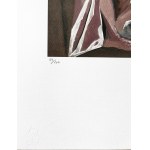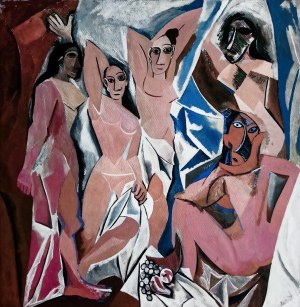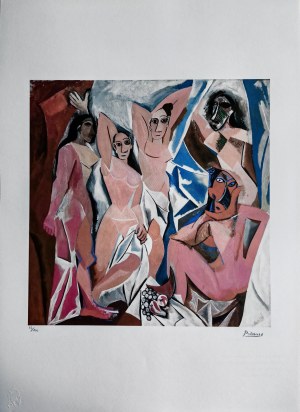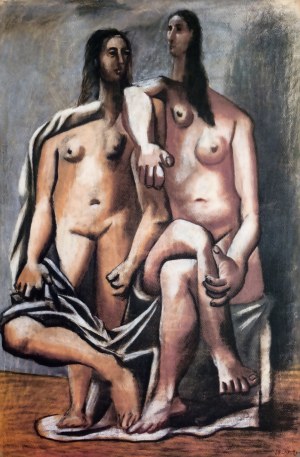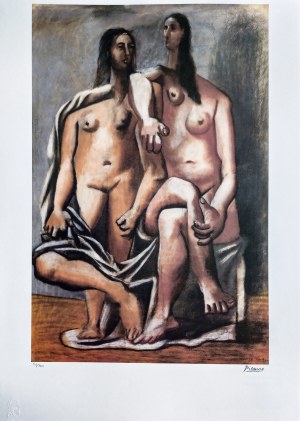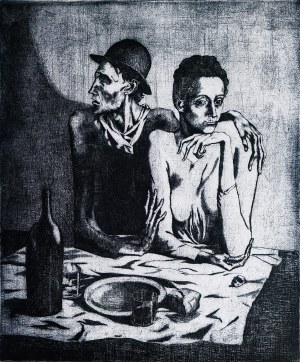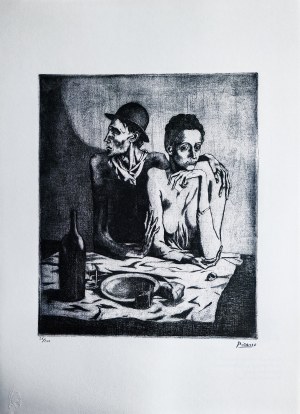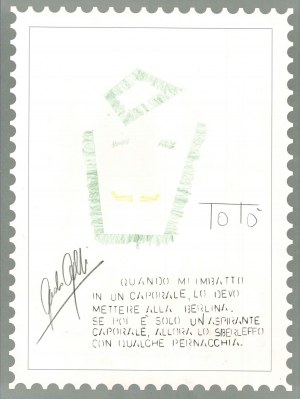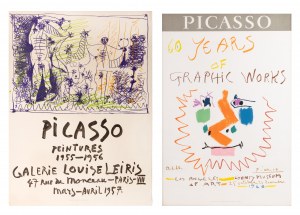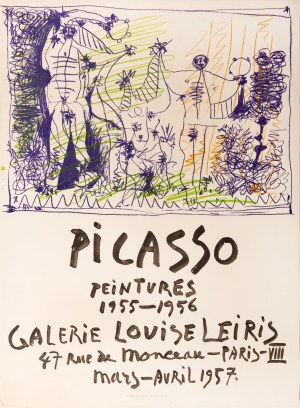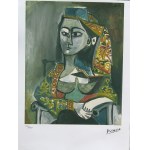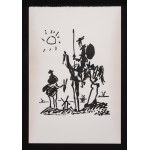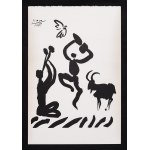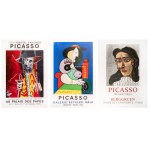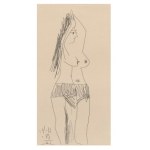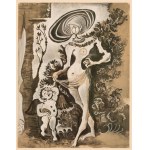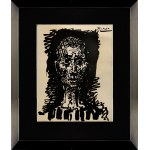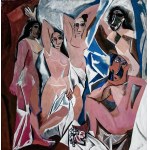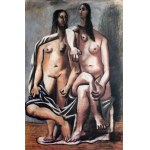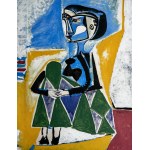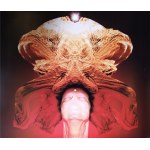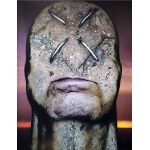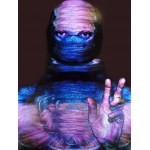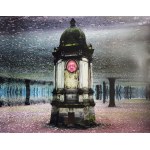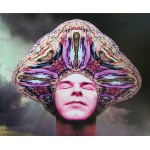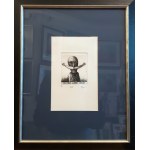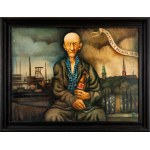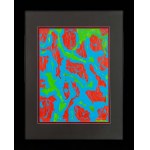Graphics, limited edition of 200 pieces, on French paper.
Each print is individually numbered.
Inscription in pencil l.d.: 173/200, p.d.: facsimile of "Picasso".
Dimensions: 50 x 70 cm (entire sheet).
At the bottom l.d.: dry publisher's stamp
On the back: typographical description and hologram
Condition: very good
A man who creates something new must make the thing ugly. Concentrating his forces to create intense tension, struggling to achieve it, he will always end up creating an ugly thing, and only his imitators can make anmake something beautiful out of it, because they know what they are doing, since the thing has already been invented, but the inventor himself does not know what he will discover, so his work must inevitably be ugly. /Pablo Picasso/
"The Maids of Avinion" was completed by Picasso in July 1907, but it was not until nine years later that a public presentation was made at the Autumn Salon in 1916.
The painting was created in a Parisian studio in Montmartre - the famous Le Bateau-Lavoir. The title did not become public until 1920. Picasso hid this huge painting, which was seen only by a narrow circle of the painter's friends, among them min. Matisse.
When the completed painting was seen by Georges Braque, he said: "it looks as if someone drank kerosene and ingested pitch to spit fire." André Derain was also critical: "one day Picasso will hang himself with his great painting." However, by breaking with his previous views in art, Picasso initiated the creation of a new language of fine arts. Shortly thereafter, the painter was joined by Braque. In their paintings, they alluded to Cézanne's way of seeing reality, based on three geometric solids: sphere, cylinder and cone, synthesizing solids into the simplest forms, shortening perspective, blurring the space between planes and making the image shallower.
Picasso's painting was a turning point in the history of modern painting and is considered the starting point of Cubism. This is because it broke with the classical formula of figurative representation. The aesthetics of this work were shocking. Women lost their beauty and transformed into monsters. The painting as a whole caused a shock - provocative poses, colors and a clash of styles.
Picasso was inspired by primitive African sculptures. He used masks to replace the faces of two women. All the faces are elongated and pulled together - shown simultaneously from different viewing angles. Each element of the composition is a combination of flat, geometric shapes.
The painting was preceded by numerous preparatory studies. Nearly 200 sketches and many notes have been preserved.
Interestingly, the painting was originally called "Five Prostitutes of Avignon." The name "Virgins of Avignon" was later suggested by the art dealer Andre Salmon. Picasso once lived two steps away from carrer d'avingo (a street of brothels in Barcelona). He used to buy paper and watercolors there.
"I associated theword Avignon with something that I knew and that was related to my life" (Picasso).
Born in Malaga in 1881, Pablo Picasso's father was a draughtsman, and it was he who gave him his first workshops and discovered his talent. At the age of fourteen, Pablo entered the Royal Academy of Fine Arts of St. Ferdinand. He also soon found himself in Paris becoming a member of the French bohemian art scene. He then stayed in Italy during the hostilities of the First War, while he spent the 1930s in Spain, among other places. Picasso lived the first half of his forties in Paris, becoming a communist there to live out his years, near Cannes, in the south of France. He was the creator of such unforgettable works as his "Longchamp," for example, an expression of forms combined with bright colors. Next was Picasso's blue period, in which blue was intended to convey feelings of sympathy, sadness or emotion. It is probably enough here to mention his work entitled "The Call. The Funeral of Casagemas" from 1901, or the painting "The Old Guitarist," committed in 1903. Later came his pink period and, for example, the painting "The Harlequin Family." However, this time also passed for the new - Picasso was experiencing the world, as it were, anew, and therefore his pre-Cubist period, hence works such as "Portrait of Kahnweiler", "Harlequin" from 1915. This was by no means the end of the evolution. Indeed, he experienced a relapse into classicism as seen in the work "Women at the Fountain." Finally came his pre-war surrealism evident in "Dance" and "Red Armchair." Paintings, on the other hand, such as "Massacre in Korea" from 1951 and "War and Peace" are from the post-war period. Some even see mannerism in his work at that time. Note the reinterpretations of Velaswuez's work "Las meninas" and the famous work "Breakfast in the Grass." Meanwhile, Picasso was besides engaged in making art ceramics, with which he marked his last creative period. He died on April 8, 1973 in Mougins. During his life, Pablo Picasso was in seven prolonged relationships. He had four children: Paul (with Olga Kokhlova, his first wife), Maya (with Maria Teresa Walter), Claude and Paloma (with Francoise Gilot, his second wife). (Source: www.zyciorysy.info)






